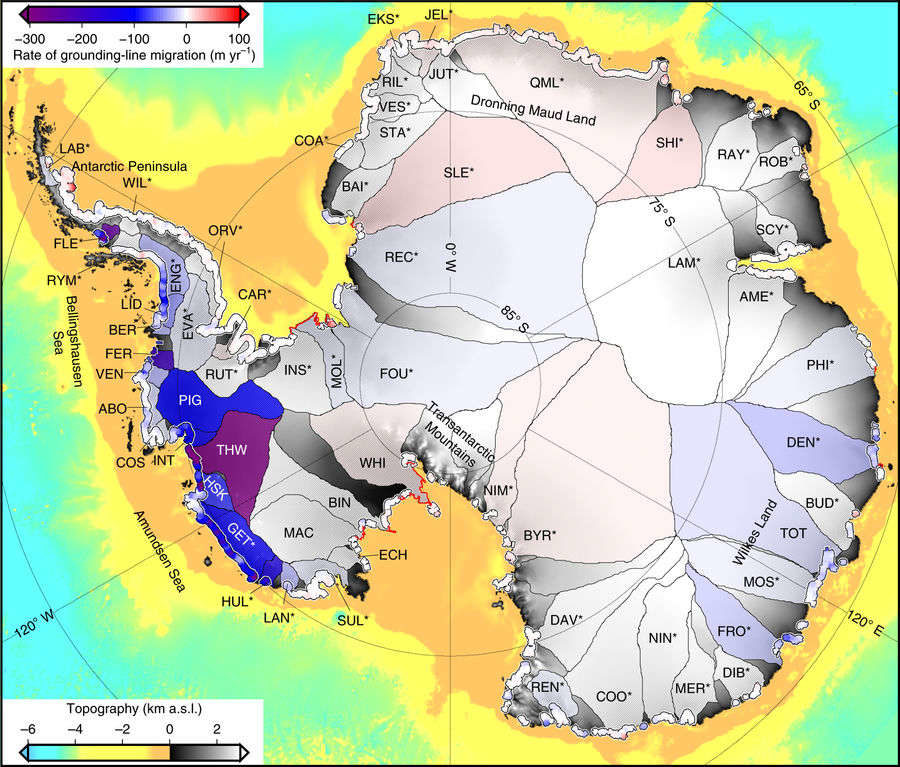
Antarctica is surrounded by a mix of sea ice formed on water, and ice shelves. Ice shelves also float, forming when a glacier is buoyant enough that its front end rests on water rather than solid ground. The point where the glacier last touches rock beneath the waterline is known as the "grounding line", and depends on both coastal terrain, and the thickness of ice at that point. Consequently, movement of the grounding line can reveal changes in the underside of the ice shelf, something that is very hard to measure.
Getting into scuba gear and measuring the location of Antarctic grounding lines in person has certain drawbacks, so Dr Hannes Konrad of the University of Leeds used satellite observations of ice altitude and the way water beneath the ice induces surface movement to reveal the shifts in grounding lines for Antarctica's 65 largest glaciers and ice sheets between 2010 and 2016.
The movement has not been consistent, Konrad and co-authors report in Nature Geoscience, both because of local terrain and shifts in ocean currents. However, some glaciers have experienced dramatic movement backwards, indicating substantial thinning of the ice. Previous studies have measured just a third of Antarctica's coastline, providing a very incomplete picture.
"Our study provides clear evidence that retreat is happening across the ice sheet due to ocean melting at its base, and not just at the few spots that have been mapped before now," Konrad said in a statement. "This retreat has had a huge impact on inland glaciers, because releasing them from the seabed removes friction, causing them to speed up and contribute to global sea level rise."
By far the worst retreat was in West Antarctica, where 22 percent of the surveyed grounding lines retreated by more than 25 meters a year, the typical pace at which grounding lines are thought to have moved since the Last Glacial Maximum. The much larger East Antarctic ice sheet was nearly in balance. Although the Antarctic Peninsula has historically shown the fastest warming, only 10 percent of grounding lines there were retreating above the benchmark. Meanwhile, just 1.9 percent continent-wide showed rapid advances.
Although the slow retreat of the East Antarctic ice sheet is good news, West Antarctica alone contains enough vulnerable ice to raise sea levels 3.3 meters (11 feet), which would drown many of the world's coastal cities.



Reader Comments